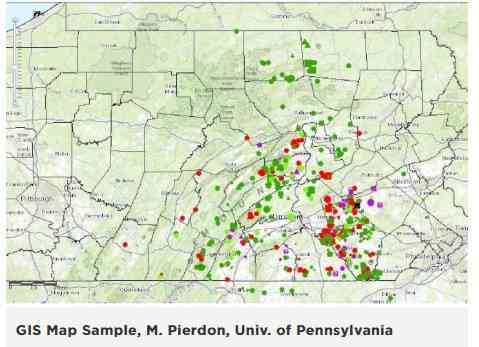Coordinated pig health management among neighbors is a great step towards minimizing the spread of swine diseases and improves pig health on your farm.

Pathogens spread disease in a variety of ways: on shoes, over air droplets, on the backs of birds, or more. Often, practicing good biosecurity on your site is an effective way to keep disease from walking onto your farm. However, in some cases, cooperating with neighbors can further reduce the spread of disease. This is where knowledge of current disease outbreaks, and communication of those outbreaks, can be critical to protecting the health of your pigs.
Currently funded by the Pennsylvania Pork Producer’s Council, The PA Regional PRRS Control Program was started as a way to provide tools and resources to allow swine producers to facilitate the regional control of the Porcine Reproductive Respiratory Syndrome (PRRS) virus. Spread predominantly via aerosol, PRRS can have devastating impacts on pig performance. Industry wide, PRRS infections account for losses of billions of dollars due to losses in growth performance, litters, and overall herd efficiency.
Participation is free to pig producers. This is key, as the system only works with producer cooperation. Sharing information about the health status of swine herds allows for regional sharing of information, and helping producers beef up their biosecurity when a known case of PRRS, or other infectious disease is in the area. Producers can access the online map in order to look at what is going on in their area as well as look for potential areas to house their pigs where there is low disease prevalence. A website allows producers and veterinarians to send out updates on unexpected disease introductions in an area and those updates automatically go to all the farmers and veterinarians enrolled in the program. The data is only shared between the participating producers and remains confidential. It is updated quarterly keep disease information current and relevant for producers to utilize and take action when needed.
Source : psu.edu